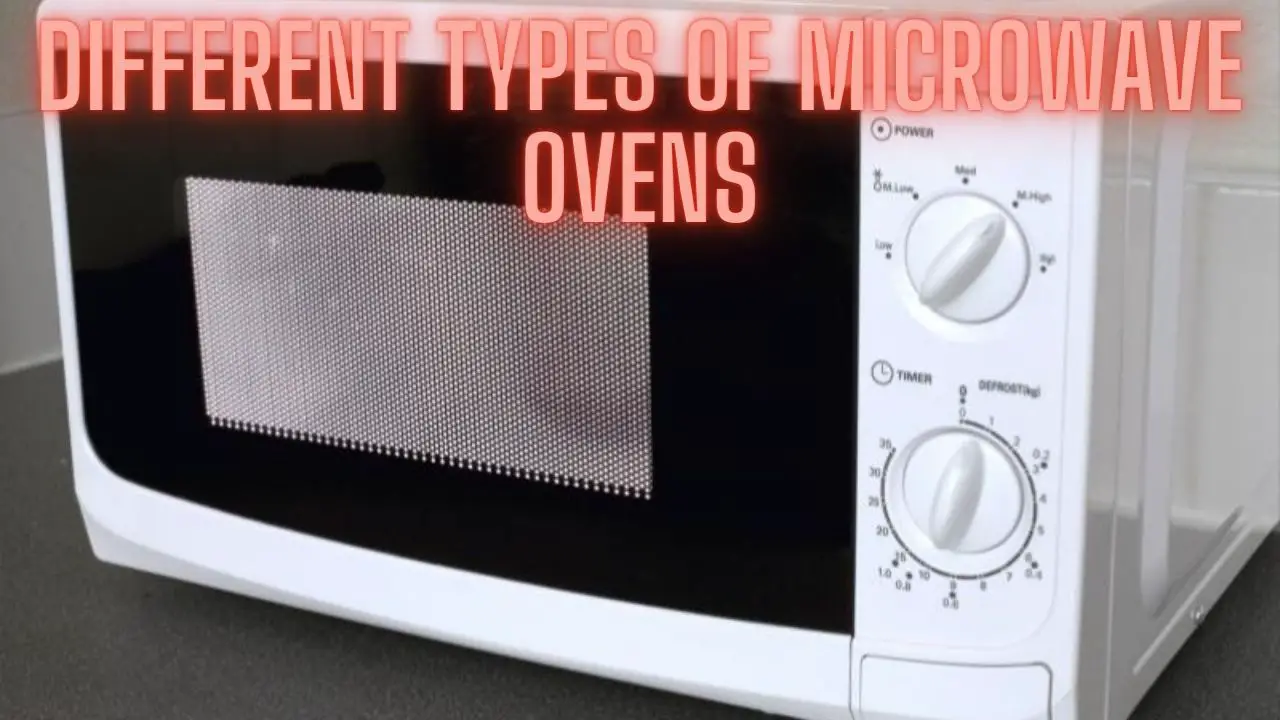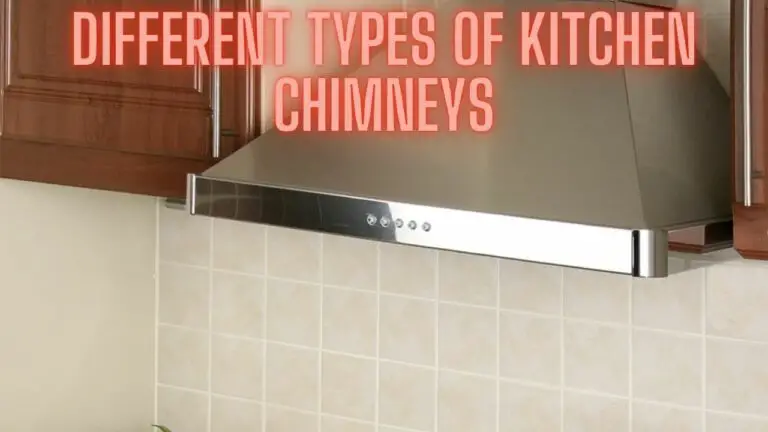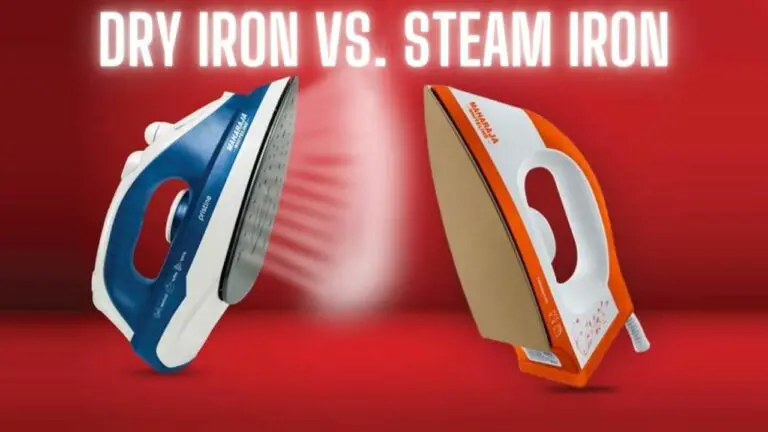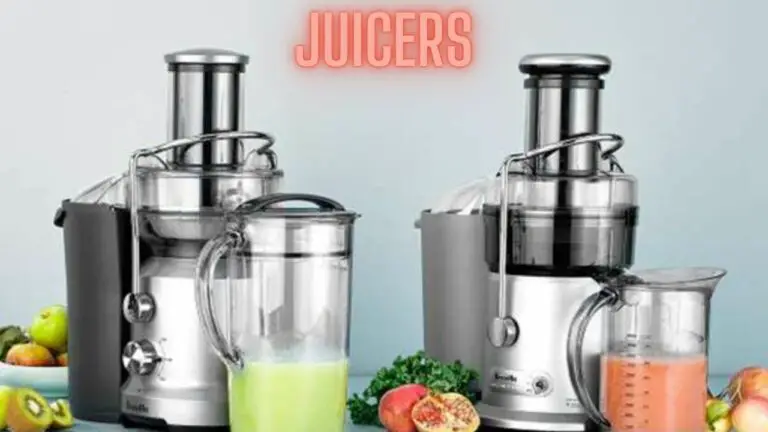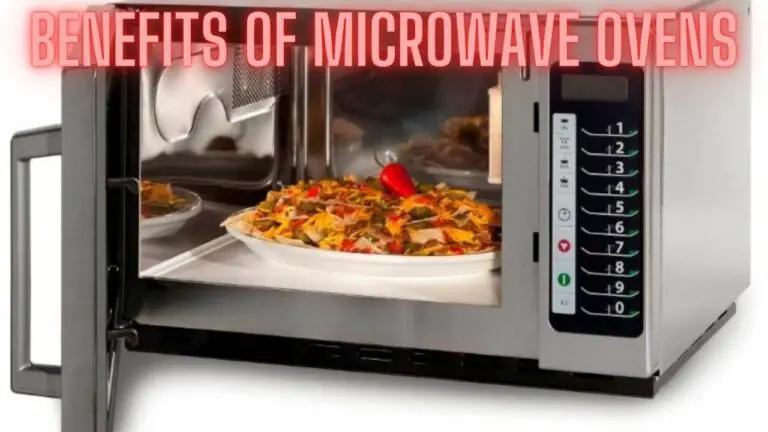Different Types of Microwave Ovens: A Comprehensive Guide
Introduction
Microwave ovens have revolutionized the way we cook and prepare food, offering convenience, speed, and versatility in the kitchen. This introduction serves as a primer to understanding microwave ovens, their importance, and the various types available in the market today.
- What is a Microwave Oven?
- A microwave oven is a kitchen appliance that utilizes microwave radiation to heat and cook food quickly and efficiently. It works by generating electromagnetic waves, commonly known as microwaves, which penetrate the food, causing water molecules to vibrate and generate heat. This process allows for rapid cooking without the need for preheating, making microwave ovens indispensable in modern kitchens.
- Importance and Benefits of Microwave Ovens
- Microwave ovens offer numerous advantages that make them an essential appliance in households worldwide.
- Time-Saving: Microwave ovens can cook food in a fraction of the time required by conventional cooking methods, making them ideal for busy individuals and families.
- Energy Efficiency: Compared to traditional ovens and stovetops, microwave ovens consume less energy, contributing to lower utility bills and reduced environmental impact.
- Versatility: Microwave ovens are versatile appliances that can be used for various cooking tasks, including reheating leftovers, defrosting frozen foods, and even baking and roasting with advanced models.
- Preservation of Nutrients: Microwave cooking can help preserve the nutrients in food, as it requires shorter cooking times and minimal use of water, which can leach out vitamins and minerals.
- Convenience: With features like pre-programmed settings, sensor cooking, and automatic timers, microwave ovens offer unparalleled convenience in meal preparation.
- Microwave ovens offer numerous advantages that make them an essential appliance in households worldwide.
In the following sections, we will explore the different types of microwave ovens available, ranging from basic countertop models to advanced combination units, as well as their features, technologies, and considerations for choosing the right microwave oven for your needs.
Basic Classification of Microwave Ovens
Microwave ovens come in various types, each designed to suit different kitchen layouts and cooking preferences. Understanding these classifications can help you choose the right microwave oven for your needs.
- Countertop Microwave Ovens:
- Countertop microwave ovens are the most common and versatile type of microwave oven. They sit on the kitchen countertop and are easy to install, requiring only a power outlet. These ovens come in a range of sizes and capacities, making them suitable for small apartments as well as large households. Countertop models are often more affordable compared to built-in or over-the-range options.
- Over-the-Range Microwave Ovens:
- Over-the-range (OTR) microwave ovens are designed to be mounted above a cooktop or range, saving valuable counter space. These ovens typically feature built-in exhaust fans or venting systems to remove cooking odors and steam. Over-the-range models often include additional features such as built-in lighting and programmable cooking presets. While they offer convenience and space-saving benefits, installation can be more complex and may require professional assistance.
- Built-In Microwave Ovens:
- Built-in microwave ovens are integrated into kitchen cabinetry or wall units for a sleek and seamless look. They are ideal for modern kitchen designs and offer a built-in aesthetic that blends seamlessly with surrounding cabinetry and appliances. Built-in microwave ovens come in various configurations, including single and double oven setups, allowing for customization based on cooking needs and available space. While they offer a high-end appearance, built-in models tend to be more expensive and require professional installation.
These basic classifications provide an overview of the most common types of microwave ovens available in the market. In the following sections, we will delve deeper into the different technologies used in microwave ovens, as well as specialized models and features to consider when choosing the right microwave oven for your kitchen.
Microwave Oven Types by Technology
Microwave ovens employ various technologies to cater to different cooking styles and preferences. Understanding these technologies can help you select the right microwave oven for your specific needs. Here are the main types categorized by technology:
- Conventional Microwave Ovens:
- Conventional microwave ovens use basic microwave technology to cook or heat food. They emit microwaves that penetrate the food, causing water molecules within the food to vibrate and generate heat. These models are suitable for everyday cooking tasks such as reheating leftovers, defrosting frozen foods, and cooking simple dishes quickly and efficiently. Conventional microwave ovens are the most common type and are available in a wide range of sizes and capacities.
- Grill Microwave Ovens:
- Grill microwave ovens combine microwave technology with grilling elements to offer versatile cooking options. In addition to the standard microwave functions, these ovens feature a grill element that allows you to brown, crisp, and grill food items. This makes them ideal for preparing dishes such as toast, grilled sandwiches, kebabs, and crispy snacks. Grill microwave ovens provide the convenience of microwave cooking with the added benefit of achieving a grilled texture and flavor.
- Convection Microwave Ovens:
- Convection microwave ovens integrate microwave technology with convection heating, which involves the circulation of hot air inside the oven cavity. This combination allows for faster and more even cooking, as the hot air helps to brown and crisp the food’s exterior while the microwaves cook the interior. Convection microwave ovens are versatile appliances suitable for baking, roasting, and grilling a wide range of dishes, including cakes, casseroles, and roast meats. They offer the convenience of microwave cooking along with the results achieved by traditional convection ovens.
Each type of microwave oven technology offers distinct advantages and capabilities, catering to different cooking preferences and culinary needs. When choosing a microwave oven, consider the types of dishes you frequently prepare and select the technology that best suits your cooking style. In the following sections, we will explore size and capacity variations, specialized microwave ovens, and features to consider when purchasing a microwave oven.
Size and Capacity Variations
Microwave ovens come in a range of sizes and capacities to accommodate different cooking needs and kitchen spaces. Understanding the size and capacity variations can help you choose a microwave oven that fits seamlessly into your kitchen and meets your cooking requirements. Here are the main considerations:
- Small Microwave Ovens:
- Small microwave ovens typically have a capacity of less than 0.9 cubic feet (25 liters). These compact models are ideal for small kitchens, dorm rooms, offices, or RVs where space is limited. They are also suitable for individuals or couples who primarily use the microwave for reheating leftovers, defrosting frozen foods, or cooking single servings. Despite their compact size, small microwave ovens can still offer a range of features and cooking functionalities.
- Medium Microwave Ovens:
- Medium-sized microwave ovens typically have a capacity ranging from 0.9 to 1.3 cubic feet (25 to 35 liters). These models strike a balance between space-saving design and ample cooking capacity, making them suitable for most households. Medium microwave ovens can accommodate larger dishes and cookware while still fitting comfortably on a countertop or in a cabinet. They offer versatility for a variety of cooking tasks, including reheating, defrosting, and cooking medium-sized meals or side dishes.
- Large Microwave Ovens:
- Large microwave ovens have a capacity of 1.4 cubic feet (40 liters) or more. These spacious models are suitable for larger families or for individuals who frequently cook larger quantities of food. They offer ample interior space to accommodate large casserole dishes, roasting pans, or whole chickens. Large microwave ovens often come with additional features such as advanced cooking presets, sensor cooking, and convection technology to enhance cooking performance and versatility.
When selecting a microwave oven size and capacity, consider the available space in your kitchen, your cooking habits, and the number of people you typically cook for. Ensure that the microwave oven you choose fits comfortably in your kitchen layout while providing enough capacity to meet your cooking needs. In addition to size and capacity, consider other factors such as cooking power, features, and design aesthetics when purchasing a microwave oven.
Specialized Microwave Ovens
In addition to conventional microwave ovens, there are specialized models designed to cater to specific cooking needs and preferences. These specialized microwave ovens offer unique features and functionalities beyond basic microwave cooking. Here are some of the most common types:
- Microwave Drawers:
- Microwave drawer ovens feature a unique design where the microwave unit is installed below the countertop, with a pull-out drawer mechanism for accessing the oven cavity. This design allows for convenient loading and unloading of dishes, especially heavy or awkwardly shaped items. Microwave drawers are ideal for kitchen islands or custom cabinetry designs, offering a sleek and integrated look.
- Combination Microwave Ovens:
- Combination microwave ovens combine microwave cooking with other cooking methods such as convection baking and grilling. These versatile appliances offer the flexibility to choose between different cooking modes based on the recipe requirements. Combination microwave ovens are suitable for a wide range of cooking tasks, from reheating and defrosting to baking, roasting, and grilling, making them a popular choice for home cooks who value versatility and convenience.
- Steam Microwave Ovens:
- Steam microwave ovens utilize steam cooking technology to preserve the natural flavors, nutrients, and moisture of food while cooking. These ovens feature a built-in water reservoir and steam cooking settings that allow you to steam vegetables, seafood, grains, and other dishes with precision and ease. Steam microwave ovens are an excellent option for health-conscious individuals who prefer steamed foods as part of a balanced diet.
- Inverter Technology Microwave Ovens:
- Inverter technology microwave ovens use advanced power delivery systems to provide consistent and precise cooking results. Unlike conventional microwave ovens that operate at a single power level, inverter technology ovens can adjust the power output in real-time, allowing for more even cooking and defrosting. These ovens are ideal for delicate foods and recipes that require precise temperature control.
- Smart Microwave Ovens:
- Smart microwave ovens are equipped with connectivity features such as Wi-Fi and app integration, allowing you to control and monitor the oven remotely from your smartphone or tablet. These ovens may also include advanced features such as voice control, recipe suggestions, and cooking alerts. Smart microwave ovens offer convenience and flexibility, enabling you to manage your cooking tasks more efficiently.
Specialized microwave ovens cater to specific cooking preferences and lifestyles, offering enhanced features and functionalities to meet the diverse needs of consumers. When selecting a specialized microwave oven, consider the cooking tasks you frequently perform and choose the model that best aligns with your requirements and preferences.
Features and Functions
Microwave ovens come with a variety of features and functions designed to enhance cooking performance, convenience, and versatility. Understanding these features can help you choose a microwave oven that best suits your cooking needs and preferences. Here are some common features to consider:
- Turntable vs. Flatbed Design:
- Many microwave ovens feature a turntable that rotates the food during cooking to ensure even heating. Some models offer the option to disable the turntable for cooking larger dishes or using rectangular cookware. Alternatively, flatbed microwave ovens feature a stationary cooking surface without a turntable, allowing for more flexibility in arranging larger or irregularly shaped dishes.
- Sensor Cooking:
- Sensor cooking technology automatically adjusts cooking time and power levels based on the moisture and humidity levels detected in the food. This ensures that the food is cooked evenly without overcooking or drying out. Sensor cooking is ideal for reheating leftovers, cooking vegetables, and preparing frozen meals with optimal results.
- Inverter Technology:
- Inverter technology microwave ovens use variable power settings to deliver precise and consistent cooking results. Unlike traditional microwave ovens that operate at a single power level, inverter technology allows for more gradual power adjustments, resulting in more even cooking and defrosting. This technology is particularly beneficial for cooking delicate foods and achieving precise temperature control.
- Pre-programmed Settings:
- Many microwave ovens come with pre-programmed cooking settings for popular dishes such as popcorn, pizza, beverages, and frozen entrees. These settings automatically adjust the cooking time and power level for optimal results, taking the guesswork out of cooking common foods. Some models also offer customizable presets that allow you to save your favorite cooking settings for easy access.
- Child Lock:
- Child lock safety feature prevents unauthorized use of the microwave oven, particularly important in households with young children. When activated, the child lock function disables the control panel, preventing accidental operation or tampering by children. This feature provides peace of mind and ensures safety in the kitchen.
- Quick Start/Express Cooking:
- Quick start or express cooking feature allows you to start the microwave oven quickly at full power with the press of a single button. This convenient function is ideal for reheating leftovers or cooking simple dishes without the need to set specific time and power settings.
These are just a few of the many features and functions available in modern microwave ovens. When choosing a microwave oven, consider which features are most important to you based on your cooking habits, preferences, and lifestyle. Additionally, look for models that offer intuitive controls, easy-to-clean surfaces, and energy-efficient operation for optimal convenience and performance.
Energy Efficiency and Sustainability
As consumers become increasingly conscious of environmental impact and energy consumption, choosing an energy-efficient and sustainable microwave oven is essential. Here are some factors to consider:
- Energy Star Ratings:
- Look for microwave ovens with Energy Star ratings, which indicate that the appliance meets or exceeds energy efficiency guidelines set by the Environmental Protection Agency (EPA). Energy Star-rated microwave ovens consume less energy during operation, resulting in lower utility bills and reduced environmental impact.
- Power Consumption:
- Consider the wattage of the microwave oven and how it affects energy consumption. Higher wattage models tend to cook food faster but may consume more energy. Choose a microwave oven with an appropriate wattage for your cooking needs to balance energy efficiency with cooking performance.
- Cooking Settings and Features:
- Opt for microwave ovens with energy-saving features such as inverter technology, which allows for more precise power adjustments and reduces energy waste. Additionally, choose models with sensor cooking capabilities that automatically adjust cooking time and power levels to avoid overcooking and energy waste.
- Size and Capacity:
- Select a microwave oven with an appropriate size and capacity for your cooking needs to avoid excessive energy consumption. A larger oven may consume more energy to heat larger volumes of food, so choose a size that matches your typical portion sizes and cooking habits.
- Materials and Construction:
- Consider the materials used in the construction of the microwave oven and their environmental impact. Look for models made from sustainable materials or with eco-friendly manufacturing processes. Additionally, choose microwave ovens with durable construction to minimize the need for replacement and reduce waste.
- Standby Power Consumption:
- Be mindful of standby power consumption, also known as phantom or vampire power, which occurs when the microwave oven is not in use but still plugged in. Choose models with low standby power consumption or use power strips to easily turn off appliances when not in use.
- End-of-Life Disposal:
- Consider the environmental impact of disposing of your microwave oven at the end of its life cycle. Look for models that are recyclable or have components that can be easily disassembled and recycled. Proper disposal of electronic waste helps reduce landfill waste and conserves resources.
By considering energy efficiency and sustainability when choosing a microwave oven, you can reduce your carbon footprint and contribute to a more environmentally friendly kitchen. Look for energy-efficient models with eco-friendly features and consider your cooking habits and needs to make the most sustainable choice for your home.
Buying Guide and Considerations
When purchasing a microwave oven, it’s important to consider various factors to ensure you choose the right model that meets your cooking needs, fits your kitchen space, and provides optimal performance. Here’s a comprehensive buying guide with key considerations:
- Budget Considerations:
- Determine your budget range for purchasing a microwave oven. Prices can vary significantly based on the brand, size, features, and technology of the microwave oven. Consider your budget constraints and prioritize features that are essential for your cooking needs.
- Space and Installation Requirements:
- Measure the available space in your kitchen where you intend to place the microwave oven. Consider the size and layout of your kitchen to determine whether a countertop, over-the-range, built-in, or drawer-style microwave oven is most suitable. Ensure that there is adequate ventilation and clearance space around the microwave oven for proper airflow and installation.
- Cooking Needs and Preferences:
- Assess your cooking habits and preferences to determine the features and capabilities you require in a microwave oven. Consider factors such as cooking power, capacity, cooking modes (e.g., microwave, grill, convection), preset cooking programs, sensor cooking technology, and ease of use. Choose a microwave oven that offers the features and functionalities that align with your cooking style and needs.
- Durability and Warranty:
- Research the reliability and durability of different microwave oven brands and models. Read customer reviews and ratings to gauge the performance and longevity of the microwave oven you are considering. Additionally, check the warranty coverage offered by the manufacturer to ensure adequate protection against defects and malfunctions.
- Energy Efficiency:
- Look for microwave ovens with Energy Star ratings or energy-efficient features such as inverter technology and sensor cooking. Consider the power consumption of the microwave oven and choose a model with appropriate wattage for your cooking needs. Energy-efficient microwave ovens can help reduce utility bills and minimize environmental impact.
- Design and Aesthetics:
- Consider the design and aesthetics of the microwave oven to ensure it complements your kitchen decor and style. Choose a model with a finish (e.g., stainless steel, black, white) that matches your other kitchen appliances and cabinetry. Pay attention to the control panel layout, handle design, and overall appearance to ensure it meets your aesthetic preferences.
- Brand Reputation and Customer Support:
- Research reputable microwave oven brands known for quality, reliability, and excellent customer support. Consider factors such as brand reputation, customer service, availability of replacement parts, and warranty coverage. Choose a trusted brand with a track record of customer satisfaction and reliable support services.
By carefully considering these buying guide and considerations, you can make an informed decision and choose the best microwave oven that meets your needs, fits your budget, and enhances your cooking experience in the kitchen.
Maintenance and Safety Tips
Proper maintenance and adherence to safety guidelines are crucial for ensuring the longevity and safe operation of your microwave oven. Here are some essential maintenance and safety tips to keep in mind:
- Regular Cleaning:
- Clean the interior and exterior of the microwave oven regularly to remove food splatters, spills, and grease buildup. Use a mild detergent or microwave-safe cleaning solution with a damp cloth or sponge. Avoid using abrasive cleaners or scrubbing pads that may damage the microwave’s surface.
- Cleaning the Turntable and Roller Ring:
- Remove the turntable and roller ring from the microwave oven and wash them in warm, soapy water or place them in the dishwasher if they are dishwasher-safe. Wipe the microwave oven’s interior bottom surface with a damp cloth to remove any food debris or spills.
- Ventilation Maintenance:
- Ensure that the ventilation openings on the microwave oven are not obstructed to allow for proper airflow and cooling during operation. Keep the area around the microwave oven clear of clutter, and avoid placing objects on top of or blocking the ventilation grilles.
- Inspecting and Replacing Parts:
- Regularly inspect the door seal, door latch, hinges, and control panel for signs of wear, damage, or malfunction. If any parts are damaged or not functioning properly, have them repaired or replaced by a qualified technician to prevent safety hazards.
- Avoiding Metal and Foil:
- Never use metal utensils, containers, or aluminum foil in the microwave oven, as they can cause arcing, sparks, and damage to the appliance. Use microwave-safe cookware and containers made of glass, ceramic, or microwave-safe plastic.
- Microwave-safe Cookware:
- Use cookware and containers that are specifically labeled as microwave-safe to prevent leaching of harmful chemicals or melting of non-safe materials. Avoid using containers with metal trim, lids, or handles that may cause arcing or fire hazards.
- Proper Use of Plastic Wrap and Covers:
- When covering food with plastic wrap or microwave-safe covers, ensure they are vented or loosely draped to allow steam to escape and prevent pressure buildup. Avoid tightly sealing containers or wrapping food with non-vented plastic wrap, as it can cause steam to accumulate and lead to burns or spills.
- Safe Operating Practices:
- Follow the manufacturer’s instructions and guidelines for operating the microwave oven safely. Avoid overcooking or overheating food by using appropriate cooking times and power levels. Never leave the microwave oven unattended while in operation, and supervise children when using the appliance.
- Unplug During Extended Periods of Non-use:
- If you plan to be away from home for an extended period or during a thunderstorm, unplug the microwave oven to prevent electrical surges, power outages, or unauthorized use.
- Professional Maintenance:
- Schedule periodic professional maintenance and inspection of your microwave oven to ensure that all components are functioning correctly and safely. Consult the manufacturer’s recommendations for maintenance intervals and service requirements.
By following these maintenance and safety tips, you can ensure the safe and efficient operation of your microwave oven while prolonging its lifespan and minimizing safety risks. Always prioritize safety and proper maintenance to enjoy hassle-free cooking experiences in your kitchen.
FAQS
What are the main types of microwave ovens available in the market?
- The main types of microwave ovens are countertop microwave ovens, over-the-range (OTR) microwave ovens, built-in microwave ovens, drawer microwave ovens, and combination microwave ovens.
What is the primary difference between countertop and built-in microwave ovens?
- Countertop microwave ovens sit on the kitchen counter, while built-in microwave ovens are integrated into kitchen cabinets or walls for a seamless and custom look.
Can countertop microwave ovens perform the same cooking functions as built-in microwave ovens?
- Yes, countertop microwave ovens can perform similar cooking functions as built-in models, but built-in models are often more versatile and offer more advanced features.
Are combination microwave ovens worth the investment?
- Combination microwave ovens, which combine microwave cooking with convection heating and grilling elements, are worth the investment if you want a versatile cooking appliance that can replace multiple kitchen appliances.
What is the advantage of using an over-the-range (OTR) microwave oven?
- OTR microwave ovens save counter space and often include ventilation features to remove cooking odors and smoke. They serve a dual purpose as both a microwave and a range hood.
How do drawer microwave ovens differ from other types of microwaves?
- Drawer microwave ovens are installed below the countertop or into kitchen islands, offering easy access and convenience. They are particularly useful for families with children or limited mobility.
Are convection microwave ovens suitable for baking and roasting?
- Yes, convection microwave ovens are ideal for baking, roasting, and crisping food in addition to standard microwave cooking tasks.
Do built-in microwave ovens require professional installation?
- Yes, built-in microwave ovens typically require professional installation due to the need for proper placement, electrical connections, and integration with kitchen cabinetry.
Can combination microwave ovens replace other kitchen appliances like traditional ovens and grills?
- Yes, combination microwave ovens can replace traditional ovens and grills for many cooking tasks, making them a space-saving and versatile option.
What factors should I consider when choosing the right type of microwave oven for my kitchen?
- Consider factors such as kitchen space, cooking needs, available features, size and capacity, wattage, and budget when choosing the right type of microwave oven for your kitchen.
Do microwave ovens with higher wattage cook food faster?
- Yes, microwave ovens with higher wattage can cook food faster, but they may also consume more energy.
Are there microwave ovens with sensor cooking capabilities?
- Yes, many modern microwave ovens come equipped with sensor cooking technology, which automatically adjusts cooking time and power levels based on the food’s moisture and temperature.
How do I properly maintain my microwave oven?
- Proper maintenance includes regular cleaning of the interior and exterior, checking and replacing filters (if applicable), and following the manufacturer’s instructions for care and maintenance.
Conclusion
Microwave ovens have evolved far beyond their original purpose of reheating leftovers. With a variety of types and features available, there’s a microwave to suit every cooking style and kitchen design. Whether you opt for a basic countertop model, a versatile convection microwave, or an integrated built-in oven, the right choice can enhance your culinary adventures and make your kitchen more efficient. Consider your cooking needs, kitchen space, and budget when selecting the perfect microwave oven for your home.

